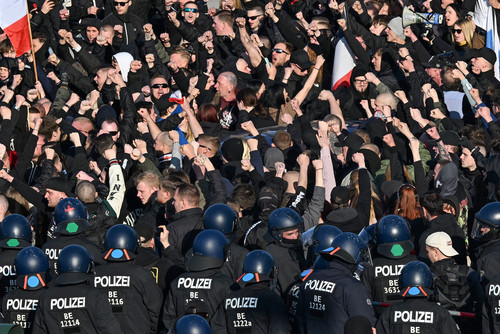The Media Pluralism Monitor (MPM) is a holistic tool that measures media pluralism and media freedom in EU member states and in EU candidate countries. The latest report for 2025 was published in June. It summarises the state of the media sphere in the European Union (EU). Marie Palmer, technical coordinator of the Media Pluralism Monitor, and fellow experts who contributed to the report describe how the MPM measures the health of a national news media ecosystem “using a questionnaire of 200 variables that target specific aspects of media pluralism and freedom in 35 countries”. Outlining all-encompassing areas of precarity, the four target areas begin with Fundamental Protection, delve into Market Plurality and Political Independence, and conclude with Social Inclusiveness.
Press and news media are considered the fourth estate, responsible for holding the other high powers accountable. Almost half of the countries (13) score either high or very high risk on the ‘Editorial Independence from Commercial and Owners Influence’ indicator. With journalistic integrity being compromised by increasing political and economic pressures, and with the emergence of alternative digital media ecosystems, has citizen journalism become more important in today’s socio-economic climate?
Konrad Bleyer-Simon, a disinformation expert who is a researcher at the Centre for Media Pluralism and Media Freedom: “The risks in the ‘Editorial Independence from Commercial and Owners Influence’ indicator are mainly due to the weaknesses of the regulatory and self-regulatory systems in many countries that we assess. In certain cases, this means that the kinds of rules that would prevent potential interest groups from interfering in the work of newsrooms are missing. In other cases, significant segments of the news media have already been captured. Citizen journalism is not looked at by the MPM per se, but it was clear that every country we covered in the report has at least some high-quality outlets that can reliably inform people and shed light on corruption or the misuse of power. There are numerous innovative media start-ups, investigative outlets and fact-checking outlets, but they are often small and underfunded.
Attention is usually directed towards Eastern Europe and the Balkans when it comes to countries where journalists face the most obstacles. Surprisingly, the report showed that Western countries were very high-risk in how they scored on the physical and digital safety of journalists. Does this reflect the rise of conservatism and global pushback vis à vis liberal ideals? Is there a reason why this is the case?
Konrad Bleyer-Simon: “The reasons for violations of civil liberties have to be assessed country by country. In the case of physical safety, in Germany, journalists are often attacked by followers of certain far-right or extremist groups when covering protests. By contrast, physical attacks are very rare in Hungary, where the government significantly limits the work of independent media through administrative measures and interventions in the market. Digital harassment of journalists happens across the board, with female journalists in particular targeted by hostile messages.
Sofia Verza, also a researcher at the Centre for Media Pluralism and Media Freedom, is the coordinator of the Fundamental Protection area: “As mentioned above, the circumstances in which attacks and threats against journalists take place matter. Additionally, data show that reporting on highly sensitive topics like corruption, migration, environmental issues, elections and war increasingly puts journalists at risk of severe harassment. These risks are intensified by the poor working conditions of journalists. In most EU countries, the profession is becoming more precarious, journalists are paid poorly and have access to weak social security schemes. This increases their vulnerability to threats. Thus, the issue is not only the rise of conservatism but also that the profession is particularly suffering from the general economic crisis of the media sector.”
Is progress in media pluralism triggered by community or by the government? What role do each play in the advancement of protecting fundamental principles of liberal democracies?
Konrad Bleyer-Simon: “It is definitely both. Governments can foster media pluralism by creating an enabling environment for quality journalism: this includes respecting the freedom of journalists, refraining from populist communication, providing access to relevant information and potentially addressing market failures. On the one hand, the political sphere has to invest (from an economic and legal perspective) in the media sector when necessary. This is also valid when referring to the media authorities that act independently from the government. On the other hand, the journalistic community needs to work on strengthening its standards and has to be on the lookout for new models of funding and innovations in reaching audiences and conducting quality journalism.”
Sofia Verza: “A community which values good journalism would hold the government accountable for its approach to freedom of the press and the circulation of valuable information; such a community would be vigilant against government interferences on media pluralism and independence, as well as taking care to guarantee the necessary preconditions for good journalism to operate.”
Read the full report: here.
Interview questions asked by Era Kolgeci, Cardiff University graduate and Communications and Campaigns Intern at the IFJ.
